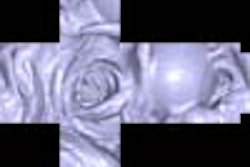Oral pentobarbital should be used instead of chloral hydrate for infant sedation before imaging, according to researchers at the 2003 American Society of Anesthesiologists meeting in San Francisco.
Until now, chloral hydrate has been the gold standard for oral sedation for pediatric radiological imaging, explained Dr. Keira Mason and colleagues from Children’s Hospital in Boston in a poster presentation. The new recommendation is based on a study by Mason and her colleagues, which found that oral pentobarbital is more effective for successful sedation and is associated with fewer adverse events.
"The take-home message is that for children undergoing MRI and CT scans, who are less than one year of age, (and) who don’t have an IV in place, so they won’t require IV contrast, the use of oral pentobarbital should be considered in lieu of oral chloral hydrate," Mason told AuntMinnie.com.
The group reviewed the records of all infants less than one year of age who received oral sedation between 1997 and 2002. In 1999, the institution’s sedation protocol switched from chloral hydrate to pentobarbital. Children’s Hospital is the sole institution to use pentobarbital for this indication, according to Mason.
Among these patients, 985 were sedated using oral pentobarbital (4 mg/kg mean dose) and 331 using oral chloral hydrate (50 mg/kg mean dose). According to the results, sedation was more successful with pentobarbital: The orally administered agent failed in only .005% of cases, while the failure rate for chloral hydrate ranged from 2%-8%.
Overall, 0.7% of infants had side effects during sedation with oral pentobarbital compared with 4.5% of infants during sedation with oral chloral hydrate (p < 0.01). Oral pentobarbital was also associated with significantly fewer episodes of oxygen desaturation (0.2% percent compared to 1.6% percent in the chloral hydrate group; p< 0.01).
There was no difference between the two groups in the mean time to sedation (18 minutes in the pentobarbital group and 17 minutes in the chloral hydrate group) or time to discharge (102 minutes versus 103 minutes, respectively).
However, Mason noted one side affect that is specific to oral pentobarbital: "rage" reaction. "This typically occurs in the recovery room while the patient is awakening and lasts from ten minutes to two hours," she said. "There is no treatment for a ‘rage’ reaction, so we usually hold the child to make sure he doesn’t injure himself or anyone else."
She added that her institution, which performs about 300 infant sedations for radiological imaging per month, uses only oral pentobarbital for this indication.
By Jill SteinAuntMinnie.com contributing writer
November 11, 2003
Related Reading
Stereotactic radiotherapy effective for pediatric brain tumors, October 23, 2003
Virtual colonoscopy useful in some children, June 13, 2003
Pediatric sedation risk lowered when guided risk assessment performed, February 6, 2002
Melatonin puts kids to sleep, makes MRI a dream, December 10, 2001
Even repeated sedation is safe for children, study shows, December 8, 2000
Tracking of pediatric sedation for MR imaging highlights concerns, July 11, 2000
Copyright © 2003 AuntMinnie.com



















